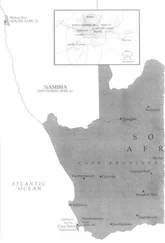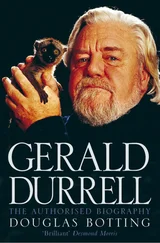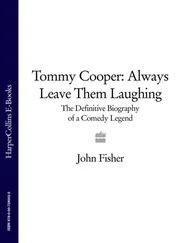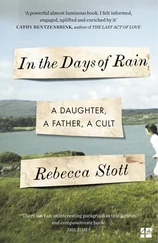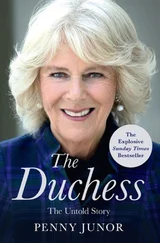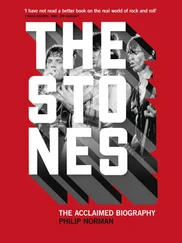By the 1930s the communists were recruiting more black members, including two able young activists, J.B. Marks and Moses Kotane, who were trained at the Lenin Institute in Moscow and returned to help organise black unions. The communists had little appeal to the ANC, still influenced by traditional chiefs. In 1939, loyal to the pact between Hitler and Stalin, the Communist Party opposed the war. But after Russia was invaded by Hitler in June 1941 and became Britain’s ally, the communists were more acceptable, and also more concerned with championing black rights. By 1945, helped by extra newsprint allocations, the circulation of the two South African communist-influenced papers the Guardian and Inkululeko had gone up to 67,000. 65
Mandela had been impressed, through white friends like Nat Bregman and Michael Harmel, by the multi-racialism of the communists, who brought blacks into contact with whites on an equal footing. It was only the communists, Mandela wrote later, who ‘were prepared to treat Africans as human beings and their equals; who were prepared to eat with us, talk with us, live with us and work with us. They were the only political group which was prepared to work with the Africans for the attainment of political rights and a stake in society.’ 66The ANC included many African communists in its ranks, and most members did not regard them as a threat. The ANC’s Secretary-General from 1936 to 1949, the Reverend James Calata, believed that ‘Communism had no influence worth worrying about.’ He saw African national life as still built on a binding system, linking the individual to the family, to the clan, to the tribe: ‘Communism, which is a purely materialistic system, cannot change the heart of the African towards it until that particular African feels that it is the only way out of oppression.’ 67
But the young nationalists of the ANC Youth League were very hostile to the communists, whom they saw as alien influences corrupting African nationalism, the ‘vendors of the foreign method’. 68Lembede fiercely attacked them, and broke up one communist meeting in Orlando with such a menacing tirade that Inkululeko commented: ‘Hitler may lose the war in Europe but he has found a convert in S. Africa.’ 69Mandela (in spite of his communist friends) and Tambo shared Lembede’s distrust, and the three put forward a motion that ‘members of political organisations’ should resign from the ANC. It was rejected by the national conference, but the Youth League’s crusade against communists continued.
The conflict was part of a broader rivalry between nationalism and communism within liberation movements across Africa and Asia that would flare up after the Second World War. The nationalists could appeal to the historical pride of their people and offer them a new self-esteem; while the communists, backed by the victorious Soviet Union, could provide organisation and funds, and an intellectual critique of imperialism. But South Africa was a special ideological battlefield. The Africans had suffered domination and humiliations, which gave impetus to their nationalism; but the country’s white minority was too large simply to be sent home, as was being urged elsewhere in Africa. ‘They talked of independence,’ said Govan Mbeki. ‘We talked of freedom. There’s a great difference.’ 70The Communist Party of South Africa was the only party which embraced all the races, and it was becoming more genuinely multi-racial than any other Communist Party. 71It was between these magnetic poles of nationalism and communism that Mandela was now pulled.

1946–1949
THE HOPES OF MANDELA and his friends for a more benign post-war world were soon dashed: not by an apartheid regime, but by the United Party government of Jan Smuts, who had been Churchill’s loyal ally in the war, and who was supported by South Africa’s English-speaking businessmen. In 1946, only months after the final Allied victory over Japan, Smuts made two ruthless moves which pushed both Africans and Indians into greater militancy, and into working together.
The first was against a strike by the newly-formed African Mineworkers’ Union, whose prime mover and first President was Mandela’s friend Gaur Radebe. Radebe had been succeeded in 1942 by J.B. Marks, a robust African communist who had studied in Moscow and who led the strike of 70,000 black miners in August 1946, demanding more pay and better food and conditions. The mining companies, supported by the government, forced the workers back down the mines with bayonets, killing nine and wounding hundreds. Ten days later, fifty of the leaders were charged with fomenting a strike. Several were found guilty, and were fined or imprisoned. 1
Most whites saw the crackdown as a necessary response to the communist menace, which was now re-emerging after the wartime truce. Smuts flew off to London, ‘not unduly concerned’, while the Rand Daily Mail attacked the ‘wild speeches and absurd demands’ of the union leaders, including ‘J.B. Marx’. 2The conservatives within the ANC, including Dr Xuma, blamed the communists for provoking a premature test of strength, but the Youth Leaguers criticised Xuma for not calling a general strike in sympathy. 3The brutal suppression seemed to vindicate Lembede’s warning that blacks could expect no mercy from the whites. Mandela was moved by the bravery and solidarity of the strikers – some of whom he knew – and he visited them with J.B. Marks. He discussed communism with Marks, and was struck by his humour and humility. Marks saw Mandela as a rabid nationalist, but thought he would outgrow that phase. 4
The crushing of the mine strike made fools of the patient delegations of the ANC ‘Old Guard’, who had put their faith in Smuts. While the black miners were being bayoneted, the Natives’ Representative Council was quietly debating black grievances with the government in Pretoria. Its members adjourned in protest, but did not actually boycott the Council. Smuts, however, realised that he had alienated ‘moderate intellectuals of the Prof. Matthews type’, and the next year he tried to placate a delegation of Council members headed by Matthews. 5Smuts spoke in his usual paternal mode: ‘This young child, South Africa, is growing up, and the old clothes do not fit the growing boy.’ He deplored their ‘sulking’ attitude, and offered them ‘a bone to chew’ in the form of a bigger Council, all black and all elected, and legalised black unions, though not in the mines. Matthews was sceptical, and explained that the black people had lost confidence in the Council. Afterwards he told the press that the mountain had given birth to a mouse, and that the hungry masses needed more than a bone to chew. 6But the Natives’ Representative Council remained passive and ineffective (it would be abolished by the first Nationalist government).
Nelson Mandela was more lastingly influenced by Smuts’s second harsh move, against the Indians in South Africa. The 300,000 Indians who had arrived in Natal since the 1860s, first as contract labourers, then as traders, had their own history of discrimination and protest. They had first learnt about peaceful protest in 1911 from Mohandas Gandhi, who devised his kind of passive resistance while he was working as a lawyer in South Africa, and had led thousands of Indians illegally from Natal into the Transvaal. Africans and Coloureds tried similar protests in 1919 and 1939, but without success. The Indians, some of whom had become prosperous merchants, kept themselves aloof from blacks, and hoped for better treatment after the war. But in 1946 the Smuts government introduced the Asiatic Land Tenure Bill, the ‘Indian Ghetto Act’, which banned the sale of any more land to Indians, while offering them the sop of white representatives in Parliament and an advisory board. It shook the Indians out of their complacency. For two years they sustained a passive-resistance campaign echoing Gandhi’s of thirty-five years before, occupying land reserved for whites: two thousand protesters went to jail, including the campaign’s two leaders, Dr ‘Monty’ Naicker and Dr Yusuf Dadoo. 7
Читать дальше


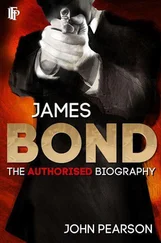
![Мик Уолл - Когда титаны ступали по Земле - биография Led Zeppelin[When Giants Walked the Earth - A Biography of Led Zeppelin]](/books/79443/mik-uoll-kogda-titany-stupali-po-zemle-biografiya-thumb.webp)
